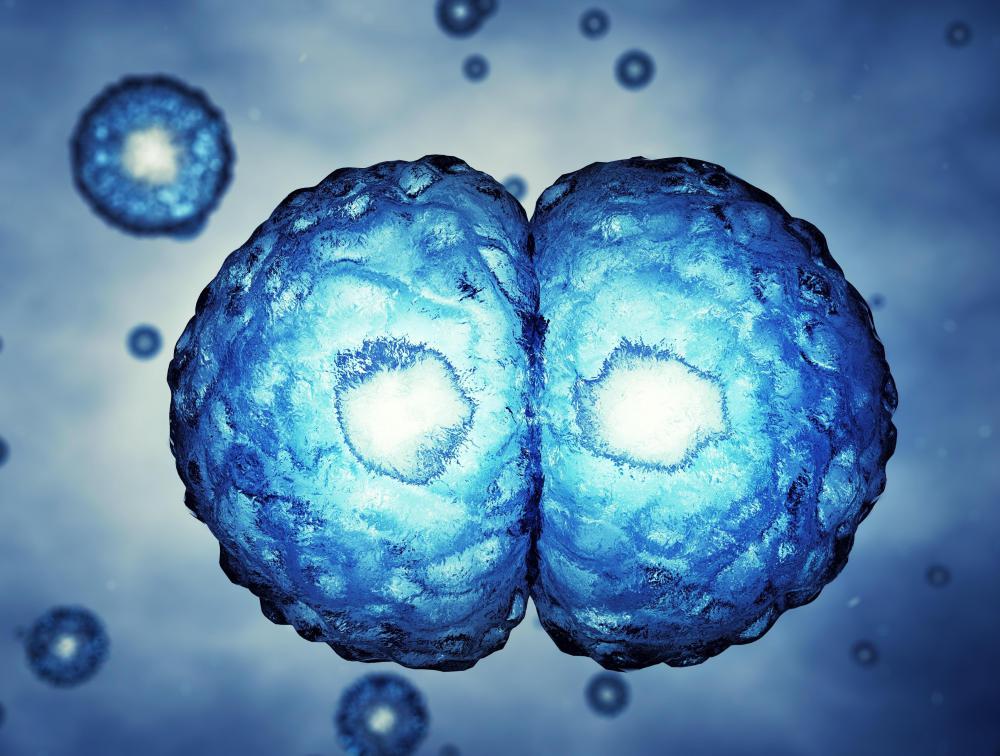At WiseGEEK, we're committed to delivering accurate, trustworthy information. Our expert-authored content is rigorously fact-checked and sourced from credible authorities. Discover how we uphold the highest standards in providing you with reliable knowledge.
What are the Different Types of Human Cells?
Human cells are extremely specialized to perform millions of specific tasks that enable humans to not only live in their biological environments but to alter those environments to their liking. Hundreds of different types of human cells are necessary to perform these varied tasks. Classifying the types of human cells may be done on the many sets of criteria including their source of origin, tissue or system function or the cell’s life pattern.
Classifying the types of human cells by their source of origin is accomplished by studies of human development or embryology. Three primary germ layers develop from cell division of the fertilized ova within the first six to eight days. The outer layer, the ectoderm, will eventually form the cells of the epidermis, including skin, nails, and hair, and the nervous system. The inner layer, the endoderm, becomes the epithelial lining of the digestive system and associated glands and tissues. The mesoderm, between the other two layers, produces cells of the muscular and skeletal systems, and of the lymphatic and vascular systems.

Histology or the study of tissues, classifies the types of human cells by the primary tissue function. Epithelial cells are found throughout the body, including skin and in the linings or coverings of parts of the digestive tract and of the heart, glands, blood vessels and other locations requiring smooth, dense protection. The digestive system includes several specialized cell types, such as the nephrons in the kidney, the villa of the small intestine and liver cells. The cells of the circulatory and respiratory systems are quite diverse, including red and white blood cells and the alveoli of the lung.

The muscular, skeletal and articular systems control how humans move. Muscle cells are of three types: smooth, striated or cardiac. Skeletal cells are primarily bone and cartilage cells. The articular system includes connective tissue cells that make up ligaments and tendons.
Neurons are the principle cells of the nervous system and are characterized by the ability to receive and transmit chemical signals. Sensory systems include many specialized cells such as the retinal cell in the eye, and pressure and heat sensing cells in the skin. Hearing is accomplished by a complicated series of physical sound conduction through bones and via drum heads and the connection to the nervous systems through the vibration of specialized hair cells of the inner ear. Other systems with specialized cells include the reproductive, endocrine, lymphatic and urinary systems.

The types of human cells may also be organized by the phase of the cell cycle they exist within. Labile cells have specific life spans and reproduce essentially constantly. These include digestive tract cells, bone marrow and the alveoli of the lung.
Stable cells may reproduce as required by the body. A liver cell will regenerate as necessary while a kidney cell cannot. Permanent tissue cells are considered irreplaceable by the body and include the lens of the eye and red blood cells as examples. Somatic stem cells and neurons used to be in this category but have proven to be capable of regeneration. All of these cells are still subject to the aging of the individual body through poorly understood mechanisms.
AS FEATURED ON:
AS FEATURED ON:
















Discuss this Article
Post your comments